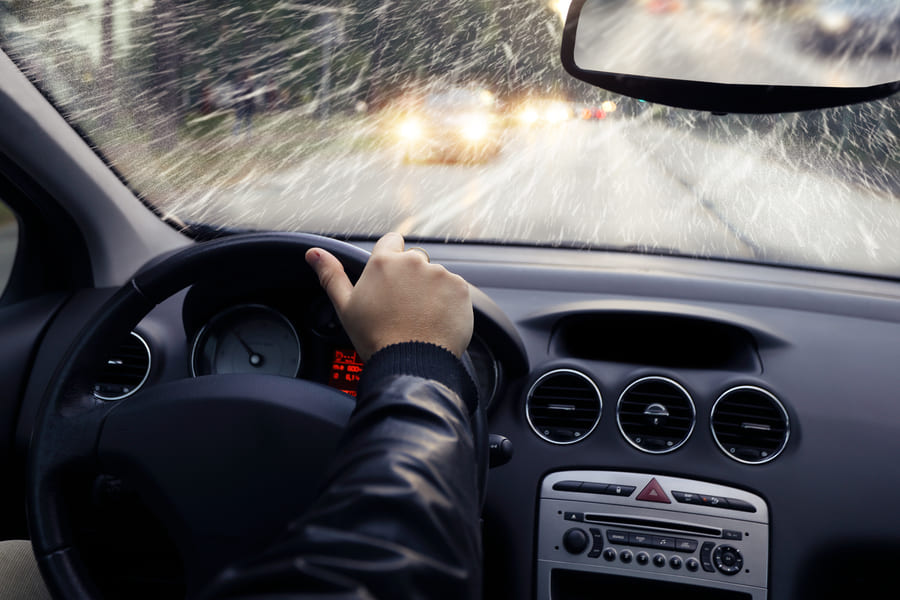
Probability of a road accident in the rain increases on average by 30 – 40 %. Here we tell you what you should beware of most, and how to drive in the rainy weather so as to avoid road troubles.
4 dangers awaiting the driver
- Slippery road. The wheel grip coefficient on wet asphalt is 1.5 – 2 times lower than on dry asphalt. The first raindrops are especially dangerous. When falling on the ground they kick up road dust which consists of oil, fuel, plastics, rubber particles and other substances which get mixed up and create a thin but very slippery film on the road. The braking distance increases by 5 – 10 times.
- Aquaplaning. When driving on a wet surface at high speed, there isn’t enough time for water to be removed from under the wheels. A water cushion is formed between the tread and the road surface, the asphalt grip is completely lost and the car becomes uncontrollable.
- Bad visibility. Road visibility significantly worsens when it rains heavily. Outlines of objects are non-distinct, wipers can’t manage to remove water from the windscreen in time. Windows mist up due to high humidity. All this not only makes it more difficult to see an obstacle but also acts as a distraction.
- Drowsiness. Sleepiness in the rainy weather is due to decrease in atmospheric pressure, which makes the human body reacting with the blood pressure decreases and slowing down of the heart rate. As a result, less oxygen is delivered to the brain thus causing sleepiness. The time of the driver’s reaction to what is going on increases, so that it is dangerous to continue driving in such condition.
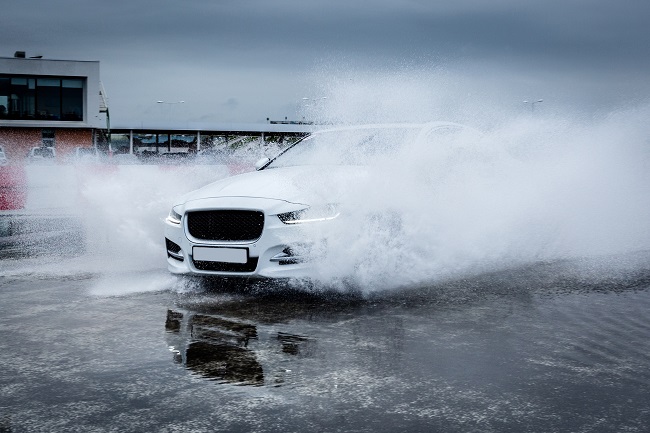
What should be checked before the rainy season
- Tyres. The minimum allowable tread depth is 1.6 mm. But Dafydd Williams, a professional driving instructor at the Mercedes-Benz World facility, advises to replace tyres as early as upon their reaching 2 mm of the thread depth. The tyres manufacturer Continental also doesn’t recommend to wait for extreme values. According to the company’s specialists, one should install new tyres when reaching 3 mm for summer tyres, and 4 mm for winter ones. A worn out tread is characterized by reduced depth of sipes and grooves responsible for wet asphalt grip and for draining water from the tyre-to-road contact patch.
If rains are frequent in your area, then opt for rain tyres. They have a low profile and a special tread pattern which is adapted to the corresponding road conditions. - Windscreen wipers and washer. It is advisable to replace windscreen wiper blades twice a year. But, first of all, you should consider the cleaning quality. If during the operation of wipers, there are spots, stains and non-cleaned places remaining on the surface, the components should be replaced. In a rainy day, their defects may become fatal.
The washer reservoir should contain enough quantity of washing fluid for removing dry dirt from windows. - Braking system. It requires regular checks. But some defects, such as a seized caliper, are especially dangerous on a wet road because they can cause skidding. Brake pads wear, which leads to a reduced braking efficiency, becomes even more dangerous in the context of braking distance increase on a wet asphalt.
- Headlights. Some defects of lighting units can show themselves only in conditions of high humidity. For example, poor tightness of the headlight leads to water getting into its housing and may result in the bulbs burnout and even short circuit. Water condensation built up on the headlight reflector worsens the lighting quality. Besides, clogging of the ventilation holes often leads to headlight misting up.
- Cabin filter. Its clogging causes reduction of air flow speed in the ventilation system. As a result, excess moisture remains in the car and shows itself in windows misting up, which is especially noticeable in the rainy weather. That is why it is recommended to replace the component at least once a year.
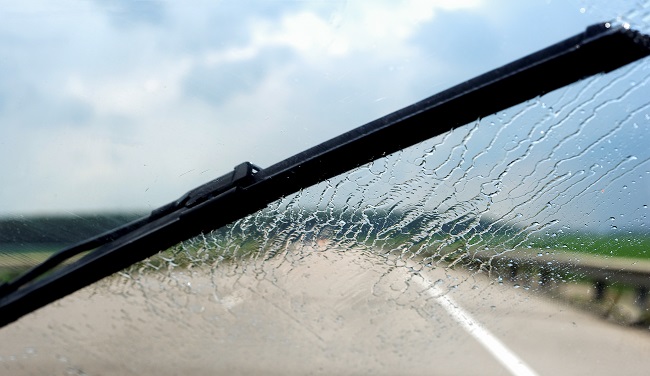
11 rules for driving in the rain which should become a habit
- Slow down as early as with the first rain drops: the road is the most slippery at that time.
- When driving in the rain, the car speed shouldn’t exceed 50 km/h. Faster driving can cause the loss of control over the vehicle. Moreover, stopping the car will be more difficult.
- Start braking beforehand. This will allow you not only to stop in time but also to help other drivers promptly understand the situation and lower the speed. When maneuvering, you should slow down before cornering. Try to brake and accelerate smoothly. Abrupt movements can cause skidding and control loss. Keep a safe distance to the car ahead.
- If the brake pads are wet, then dry them. For doing this, you should drive for some distance slightly pressing the brake pedal several times: the surface of the components will heat up, and excess water will evaporate.
- Turn on the headlights: the sidelights in the rain are often not enough for car identification on the road. It is recommended to only use fog lights in case you can’t see the road for more than 100 m ahead.
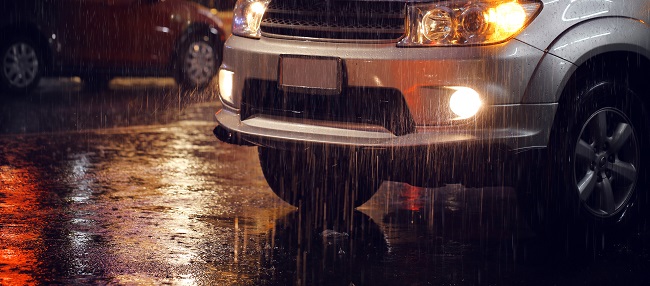
- Try not to drive right after trucks and buses. A lot of dirt flies from under their wheels.
- Dry the windows. For doing this, you should turn on the defogger or use the air conditioner. It will reduce the air humidity in a few minutes. Also, special chemical agents will help to improve visibility, such as anti-rain and anti-mist agents. The first one should be applied on the outer surface of the windows: it forms the water- and dirt-repellent barrier. The second one is used inside the passenger compartment; it holds water on the window surface in the form of a thinnest clear layer and prevents formation of drops which hinder visibility.
- Slow down before puddles. A danger can be hidden under the water. Besides, aquaplaning effect occurs more often when driving through puddles.
- If the rain is heavy, park the car on the road side to wait out. But be sure to turn on the hazard lights so that other road users would be able to notice you.
- Keep alert. Pedestrians may cross the road in undesignated areas, wishing to quickly hide from the rain. You should also beware of other less attentive drivers.
- Avoid driving being sleepy. It is very dangerous. If the trip cannot be postponed, get out of the car from time to time and do some exercises. Noticed that you don’t remember last several kilometers you’ve covered, or that you crossed a lane line or road borders unconsciously, started yawning more often, feel difficulty in keeping your head in normal position or focusing your eyes? Immediately pull over to the road side and stop. Even a 15 minute sleep can save the situation. If you often have to cover long distances, you should install the driver fatigue monitoring system on your car. It analyzes the current situation using various data such as size and changes of the pupil, and emits a warning signal.
Conclusion
Safe driving in the rain depends largely on the car technical condition and driver’s skills. Timely replacement of consumable elements and car systems diagnostics, calm driving style are important. Follow our recommendations; only buy high-quality spare parts for your car and you will be able to feel safe regardless of the weather.


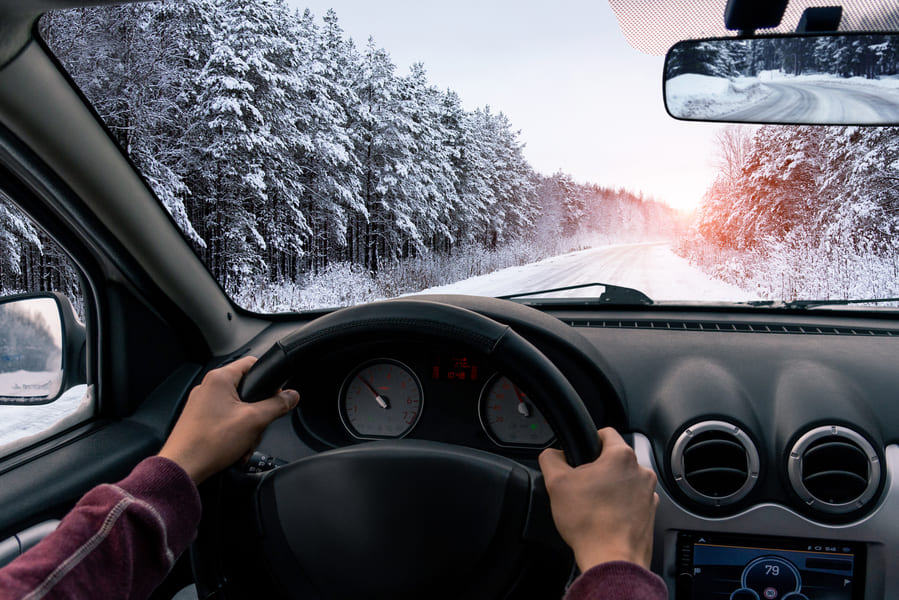



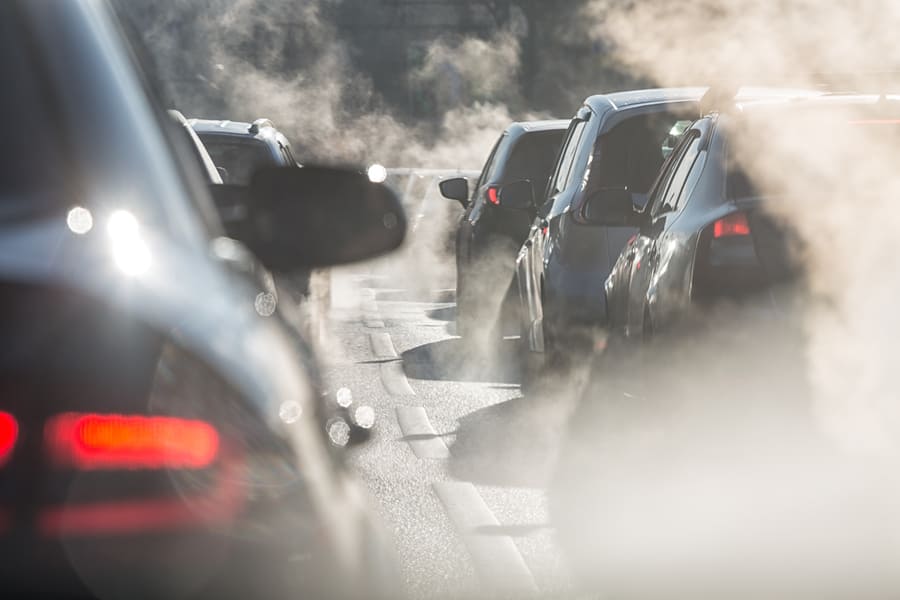
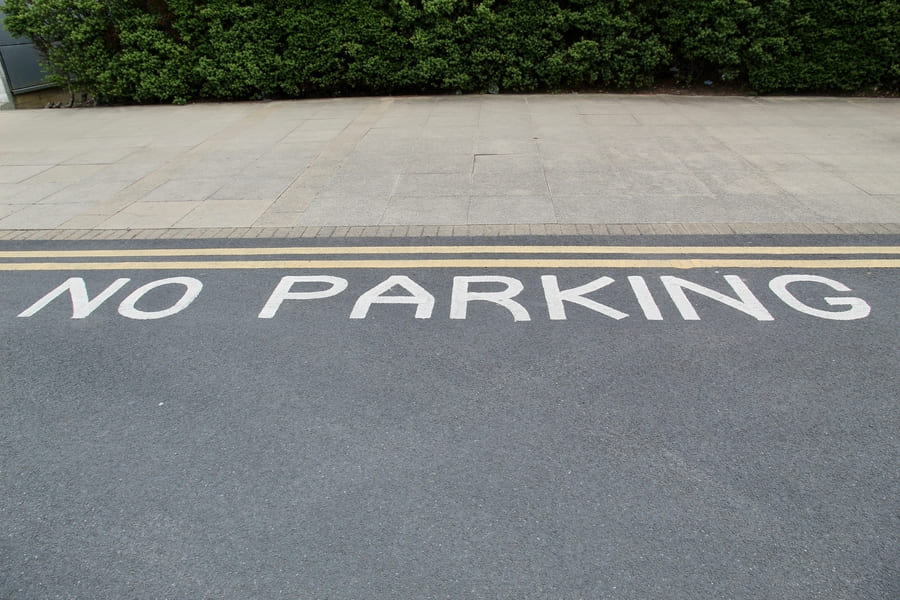
Comment